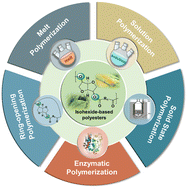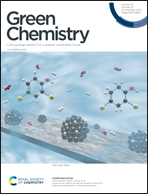Short-process synthetic strategies of sustainable isohexide-based polyesters towards higher molecular weight and commercial applicability
Abstract
Isohexides (1,4:3,6-dianhydrohexitols) represent a family of bio-based heterocyclic diols attracting over 40 years’ attention from both industry and academia. Their unique properties, including high structural rigidity, high hydrophilicity and distinct chirality, make them highly promising for developing novel sustainable polymers with higher performance, (bio)degradability and optical properties. Nevertheless, the preparation of high-quality polymers with sufficiently high molecular weight, an acceptable degree of discoloration and high/tunable contents of isohexides for commercial applications remains a great challenge due to their insufficient purity, lower reactivity and limited thermal stability. With respect to the possibility of commercialization, this review focuses on the efficiency of different short-process polymerization strategies for sustainable isohexide-based polyesters polymerized either directly or coupled with preferably in situ activation strategies. The influential factors for polymerization efficiency and the key catalytic systems of the polyesters will be also systematically discussed to gain clear insight into the challenges and prospects of isohexide-based polyesters for further practical applications.

- This article is part of the themed collection: Green Chemistry Reviews


 Please wait while we load your content...
Please wait while we load your content...